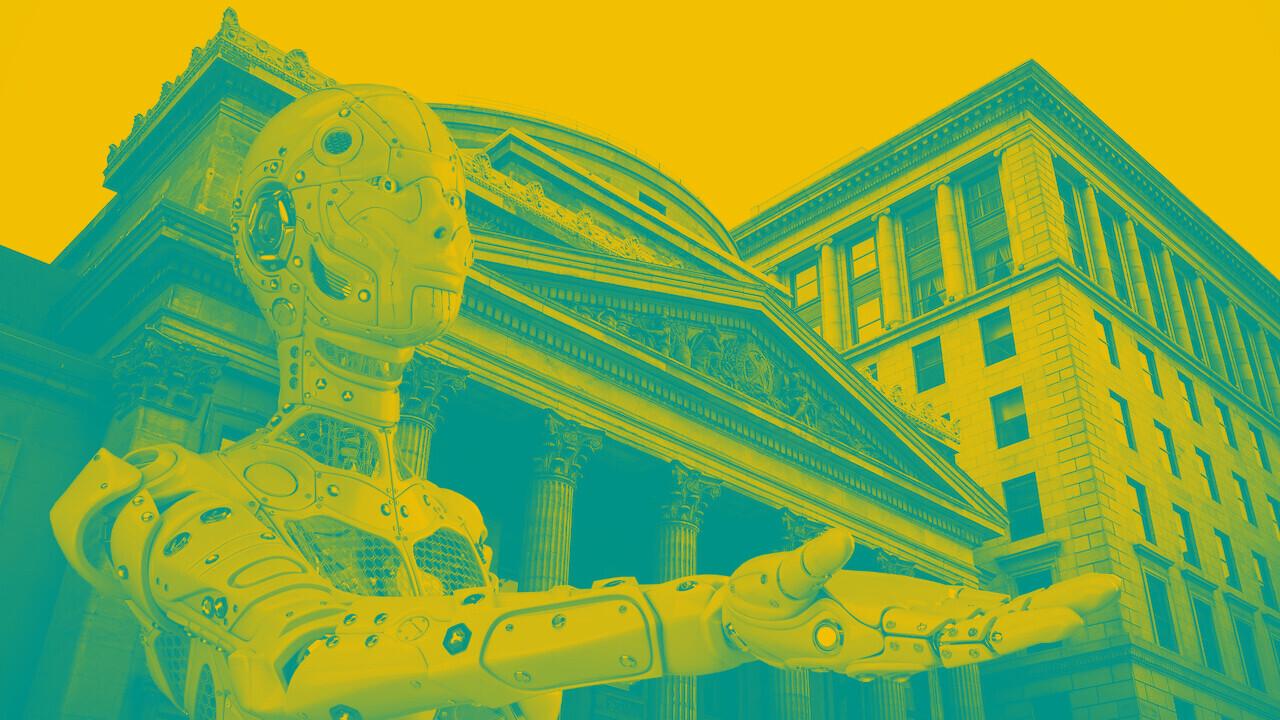
Banking has always been a strong and stable pillar of society. However, the COVID-19 global pandemic forced the entire industry to focus on digital services amidst work from home orders in various parts of the globe.
Since the lockdown in early 2020, we have seen a 72% rise in the use of fintech apps in Europe and an exponential increase in cryptocurrency prices due to an influx of large scale institutional investors. With the need to find new and better solutions to cater to customers, the once sluggish rate of emerging tech adoption amongst banks has been flung into hyper-speed.
From artificial intelligence to blockchain, there is a new realm of possibilities that banks are now experimenting with. What does that mean for the future of banking? How will this unprecedented tech boost impact banking in the next ten years?
Will robotic bank tellers greet you at your local metaverse branch as you check your crypto balance in the next decade? Not quite, but here are some ideas of what can happen.
Artificial Intelligence will deliver value for the business
Artificial intelligence (AI) has long been a technology that shows great potential. However, over the past ten years, the financial services sector has faced challenges to move past applying it in isolated use cases and proof of concepts. Dennis de Reus, Head of AI at ABN AMRO, shares:
AI has more recently been breaking into established processes and delivering value for the business.
For example, here, AI is being used to increase the speed of responses in social channels. Currently, 30% of responses made by employees are AI based suggestions available to them as shortcuts.
ABN AMRO applies AI to a broad range of topics. For example, it’s working on AI to improve on their MIFID-II reporting. In terms of product-related applications, Tikkie’s cashback and deals proposition uses AI to scan receipts and detect fraud. Finally, with regards to client service, Natural Language Processing (NLP) is being used in various ways to better understand and serve the bank’s clients. One use case is automatically extracting information from documents that clients provide.
Today, AI’s value is largely still within the area of NLP because it’s useful in working with the older unstructured data and historic contact information that many financial services have. However, during the next wave of innovation, client interactions via voice and video channels will inevitably benefit from AI as the world shifts to digital and remote client interactions.
Specifically, personalization will be where AI can add real value to client interactions. Coupled with deeper insight into client needs, AI can enable a client to speak to a voice assistant over the phone. Assuming that clients consent to the processing of their financial data, the voice assistant will be able to handle a broad range of conversations on financial topics, fed by deep insights into a client’s financial situation.
Perry Koorevaar, Head of Platforms at ABN AMRO, agrees that personalization is a major trend and will continue for the next decade. Companies are continuing to tailor their offerings and communication to increase relevancy and connect with the “right” customers at the right moment. In the world of finance, the ability to target and personalize will be vital in acquiring customers as well as in building long term, mutually beneficial relationships.
Rather than keeping a large portfolio of different products that cater to various customer needs, financial institutions will tailor products on other dimensions of their offering e.g. in communication, advice, service concepts and even in risk-based pricing. AI will enable companies to shape their communication and sales interactions in real-time.
In practice, we might see a high level of ‘regulator approved’ AI powered decision engines or robots pro-actively managing financial matters on behalf of individual persons as well as technologically advanced interactions between customers and digital representatives of their banks in the form of voice-enabled bots.
Use of cryptocurrencies will be more mainstream
A cryptocurrency is a digital or virtual currency secured by cryptography which makes it almost impossible to counterfeit or double spend. While many cryptocurrencies today reside on decentralized networks based on blockchain, various central banks around the world are also looking to release digital currencies in the future which might reside on either centralized or decentralized networks.
According to Yurry Hendriks, Head of Digital Assets at ABN AMRO:
Although we currently do not give any crypto investment advice, we do see a lot of our clients investing in the crypto space and getting hands-on experience with blockchain technology.
In their personal life, the bank’s corporate clients are already trading cryptocurrency, so they understand how the application of blockchain and smart contracts could be applied to increase the operational efficiency of their business model.
The instigator for institutional cryptocurrency investments is the maturity of the regulatory environment. With internal and external cryptocurrency educational efforts underway, institutional crypto mandates may be commonplace in the next decade.
Personally, while Dennis de Reus, Head of AI at ABN AMRO, likes cryptocurrencies from a technology perspective, he is not optimistic on it’s wide scale adoption. He believes that, “if central banks release digital currencies then perspective might change,” but it would be very different from the traditional cryptocurrencies of today e.g. Bitcoin.
Many of the solutions being built around addressing the scalability and energy efficiency of current blockchains could re-invent many aspects of modern banking. In addition, many of the benefits of cryptocurrency over fiat currencies will disappear as know-your-customer (KYC) and anti-money laundering (AML) requirements around cryptocurrencies are more tightly implemented.
However, Martijn Siebrand, Innovation Manager Digital Assets, believes that the idea of a centralized digital currency issued by a central bank authority will be likely to happen in the next decade. The European Central Bank (ECB) and Bank of England (BOE) have both launched formal investigations into the design and distribution of a digital currency. If one of these central institutions launches a digital currency, it will have a ripple effect on other financial services institutions.
Tokenizing digital assets will make certain markets more efficient
A tokenized asset is a real-world asset, tangible or intangible, being issued as a digital token on a blockchain network. Tokenization can make the issuance, distribution, and storage of that asset more efficient.
Currently, there are a lot of market inefficiencies due to a lack of technological innovation, and due to a multitude of centralized intermediates involved. Yurry Hendriks, Head of Digital Assets at ABN AMRO, says that using our current infrastructure, settlement may take up to five working days, but this will be much faster if the assets are tokenized.
Furthermore, if a digital cryptocurrency like a Euro stable coin were to exist, direct settlements without time delay could be possible. This will help make the market more efficient because the reduction of a time delay means there will also be a reduction in counterparty risk, thereby reducing cost.
A reduction in cost makes certain financial structures like corporate bonds accessible to smaller companies. Currently, corporate bonds are a way for large corporations to raise capital but the financial overhead needed to support this structure, in the form of fees for intermediary parties, doesn’t make it viable for a small company to do.
If you tokenize a corporate bond, you eliminate part of the third parties and the cost that comes with it, replacing them with smart contract transactions conducted on a distributed ledger. This makes it affordable for banks to issue smaller ticket sized bonds for small companies.
Sustainable innovation will generate impact and income
Sustainable innovation is not typically linked to generating income at the moment, but this is precisely what Talitha Mac-Lean, Portfolio Manager Sustainable Innovation at ABN AMRO, strives to do. As companies’ seek to run a more sustainable business, Talitha is investing in the exploration and building of new business models which can make an impact for clients and other stakeholders and produce income for the bank.
For instance, the bank has been investing in real estate energy efficiency solutions for some time now. It now plans to leverage this knowledge and data to help customers make more efficient and sustainable real estate decisions.
To keep up to date with the latest technologies and innovations, ABN AMRO has also partnered with TechStars to create an accelerator program that focuses on digital assets and sustainability. This will help the bank future-proof their business by allowing them to identify future partners beyond traditional finance. Expect to see even more of these bank-startup collaborations in the next ten years.
As the macro economic trend and urgency of climate change becomes more apparent, there is an urgency for new business models to tackle larger societal problems like renewable energy generation and the transition to a circular economy. This provides an abundance of investment opportunities which will make an environmental, social, and governmental impact and provide a financial return.
It’s hard to predict what the future will hold but, based on the trends we’re seeing now we can draw some interesting predictions.
While we may not be banking in the metaverse anytime soon, we predict that in ten years our banking experience will be fueled by artificial intelligence, with digital representatives recommending us personalized products. Cryptocurrencies could sit alongside fiat currencies as we transact tokenized versions of various financial instruments. Finally, sustainable initiatives will be a profitable endeavor, ending the battle between making money and saving the planet.
Whether these predictions come true or not, what we can undoubtedly say is that tech innovation will lead the way.
Get the TNW newsletter
Get the most important tech news in your inbox each week.
This post is brought to you by ABN AMRO. Whatever your specialism, with ABN AMRO your talent and creativity will help build the bank of the future. Learn more about their exciting tech job opportunities here.





